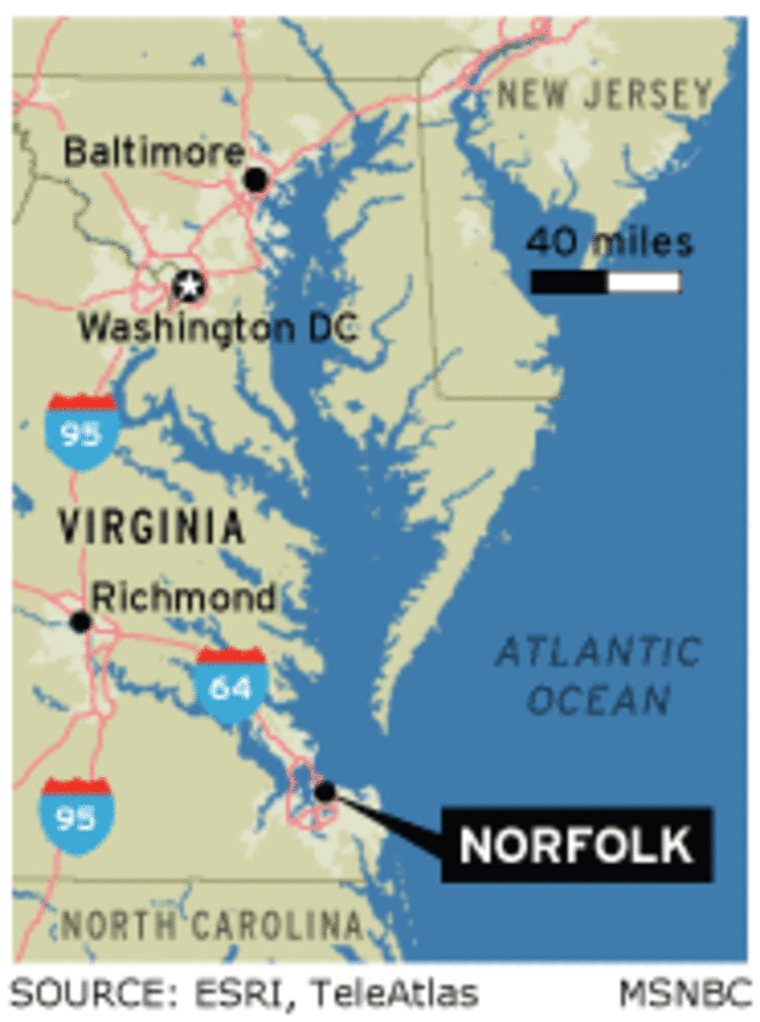For two years in a row, the Gulf coast has borne the brunt of hurricane season. And the damage has been stunning.
But the East Coast is vulnerable, too. And there are growing fears that this year, this economically vital region may be overdue. Here in Norfolk they’re considering some of the worst case scenarios.
Even in normal times, there’s water everywhere in Norfolk, a metropolitan area that's home to more than half a million people and the largest naval base in the world.
A Category Three storm here would put 90 percent of the city underwater. That’s a scenario that keeps emergency services coordinators up nights. An overreaction, you say? Not so fast.
The Chesapeake-Potomac hurricane in 1933 hit Norfolk head-on, flooded downtown and killed 18 people in a much less populated city.

Hurricane Isabel hit here just three years ago and did $1.7 billion in damage on its trip up the coast. And that was a Category Two storm.
The chance of a major hurricane – of Category Three or greater - hitting this year is 38 percent, or about average on the Gulf coast. But on the East Coast, from Florida to Maine, the chances surge to 69 percent - more than twice the average, according to NBC Weather Plus meteorologist Jeff Ranieri.
“There's a steering current in the Atlantic,” he said. “It's an area of high pressure, it's semi-permanent. Basically, it's going to act like a conveyor belt, and could project more storms right into the eastern seaboard."
The East Coast already has a frightening history of hurricanes: Hazel (1954), Hugo (1989), Fran (1996) and Floyd (1999). The risks of catastrophe are made worse by the large concentration of people and evacuation plans that are lacking, according to a Dept. of Homeland Security review.
"This is a nation that is still not prepared for catastrophic emergencies and disasters,” said George Foresman, Homeland Security under secretary.
In New York, a Category Three storm would flood lower Manhattan, experts say. John F. Kennedy airport would be underwater. In 1938, when the region had half the population it does today, a Category Three storm killed 700 people. The same storm today would do more than $200-billion in damage, according to the Insurance Information Institute -- or three times the damage done by hurricane Katrina.